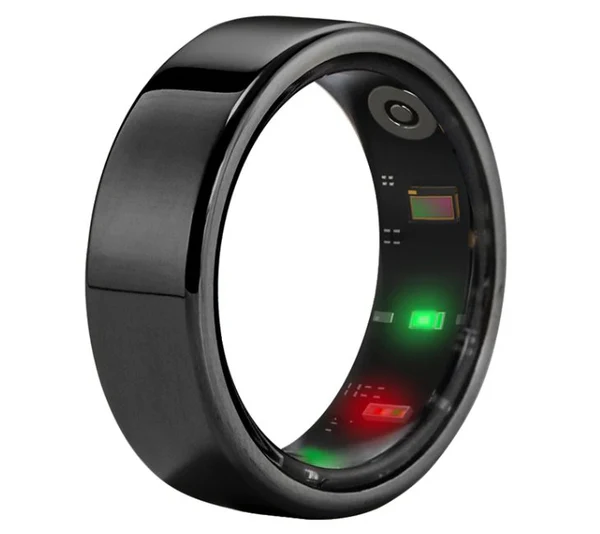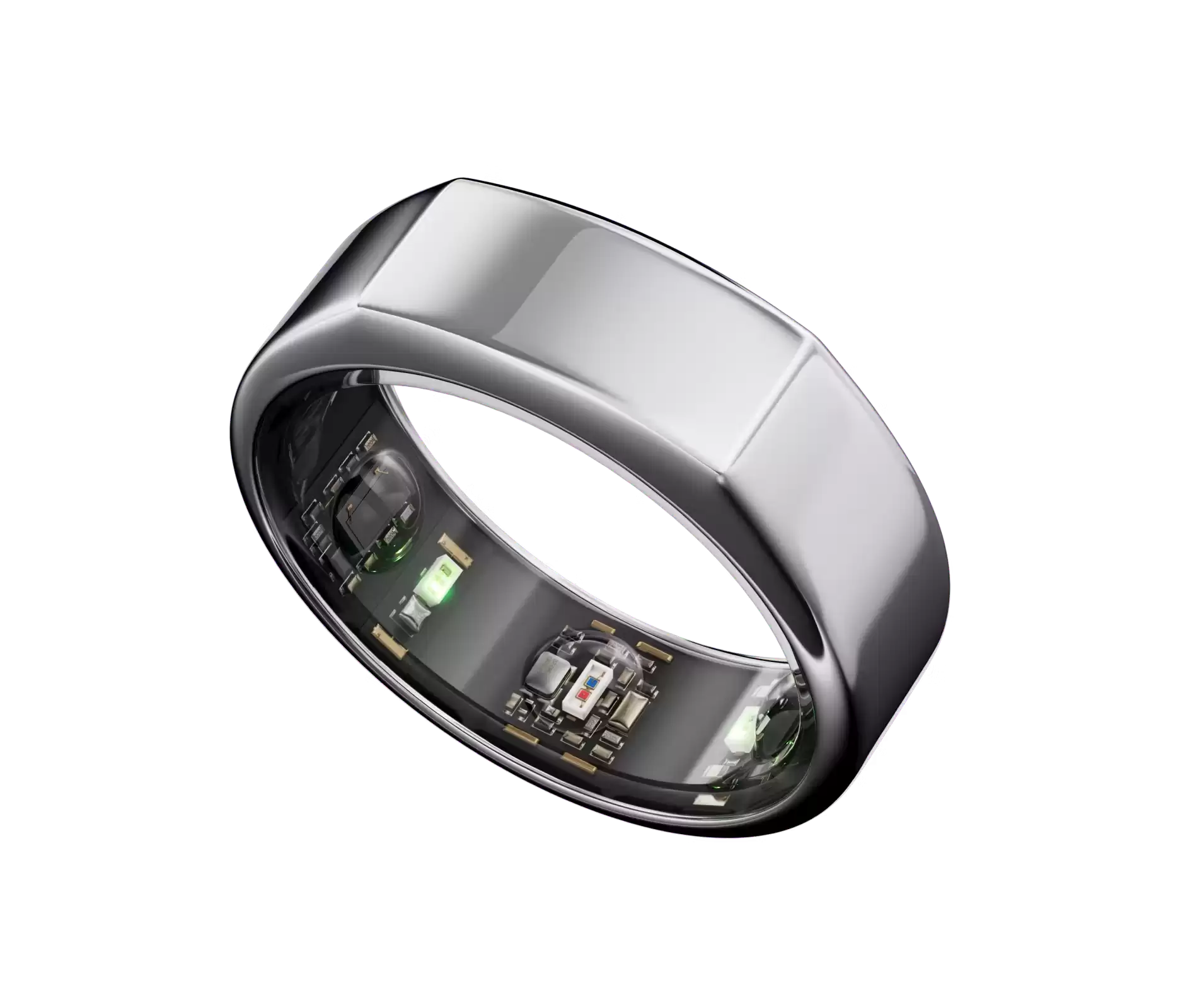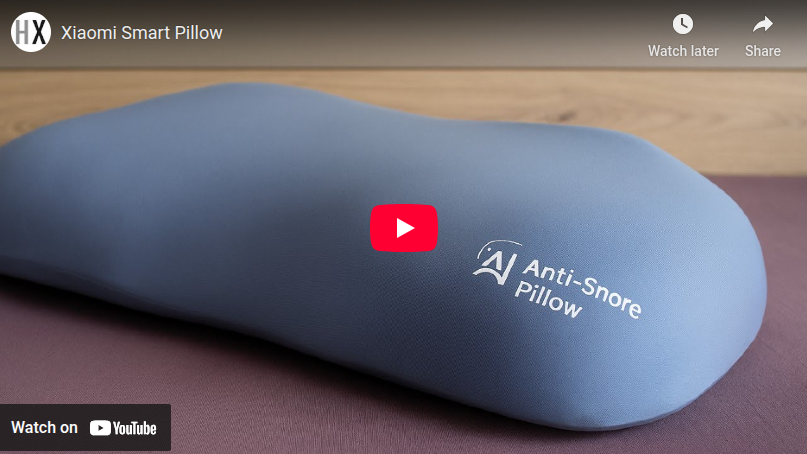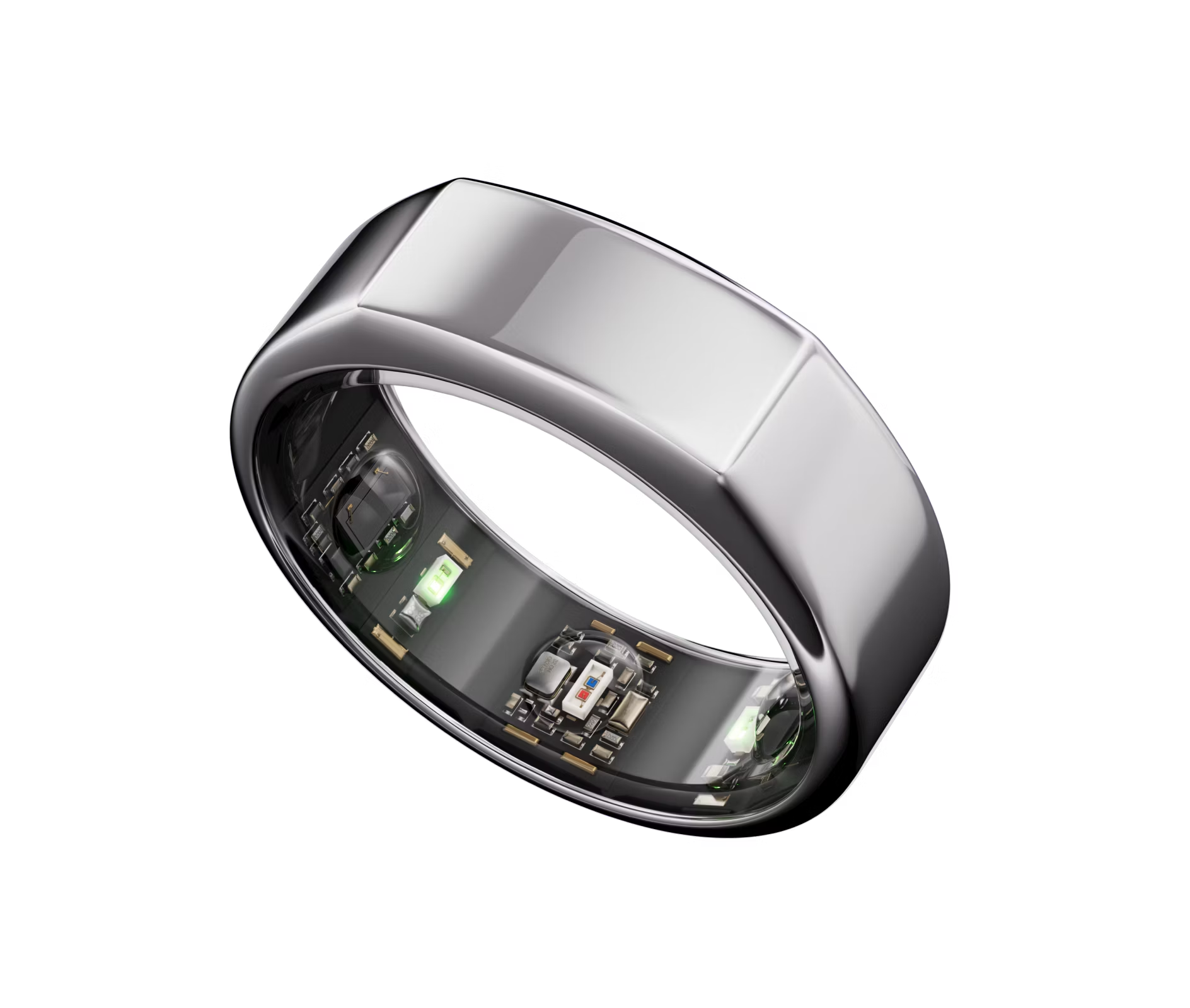Xiaomi Smart Ring: The Challenger Against Oura Ring 3
The Oura Ring 3, a trailblazer in the smart ring industry, is known for its pioneering approach to health tracking and sleek signet-ring design. On the other hand, Xiaomi's Smart Ring, in collaboration with Amovan Nova, challenges this status quo with affordability and robust features, presenting itself as a solid alternative. This comparison highlights that a smart ring’s worth isn’t solely defined by its price, but also by its ability to align with your specific health and wellness needs.
In this test, we employed industry gold standards to evaluate the smart rings against trusted health tracking tools. Specifically, we compared the Oura Ring 3 and Xiaomi Smart Ring to the Whoop bracelet and the Garmin heart rate chest strap. The Whoop consistently delivers superior health tracking, while the Garmin chest strap precisely measures heart signals. Consequently, this comparison effectively highlights how well these rings perform against proven specialized devices.
|
|
|
|
|
3.9
|
3.4
|
|
$119
|
$346
|
- Excellent sleep tracking comparable to Whoop
- Accurate heart rate measurements without a subscription
- No continuous tracking
- Lacks an activity detection feature
Comparison of Sleep Tracking Performance: Xiaomi Smart Ring vs Oura Ring
In the realm of wearables dedicated to sleep tracking, choosing between various devices is crucial for users looking to optimize their nighttime rest. Therefore, we spotlight the sleep tracking capabilities of two flagship products: the Xiaomi Smart Ring and the Oura Ring. Furthermore, we compare them to the performance of Whoop, which is recognized as the benchmark in this field.
Total Sleep Duration
The data collected shows that the Xiaomi Smart Ring and the Oura Ring provide similar measurements in terms of total sleep duration, with 10 hours and 30 minutes for Xiaomi and 10 hours and 43 minutes for Oura. These results align with those of Whoop, which records a total sleep duration of 10 hours and 35 minutes. This uniformity in results testifies to the reliability of these devices in the overall quantification of sleep.


Deep Sleep
Deep sleep, or slow-wave sleep, is essential for physical and mental recovery. In this category, the Xiaomi records 2 hours and 9 minutes of deep sleep, while the Oura logs 1 hour and 50 minutes. Whoop slightly exceeds these figures with 2 hours and 17 minutes. Although all three devices provide a good estimation of deep sleep, Whoop appears to offer slightly superior precision.
Light Sleep
Light sleep plays a crucial role in sleep regulation and the transition to deeper phases. According to our measurements, Xiaomi logs 6 hours and 38 minutes of light sleep. Oura records 6 hours and 25 minutes. Whoop reports less light sleep at 5 hours and 22 minutes, which may reflect differences in detection methodology among the devices.
REM Sleep
The REM phase is crucial for processing emotions and memory consolidation. Consequently, the Xiaomi Smart Ring captures 1 hour and 43 minutes of REM sleep. In comparison, Oura records 1 hour and 19 minutes, and Whoop logs 1 hour and 34 minutes. These variations clearly highlight the differences in each device’s ability to detect this crucial phase of sleep.
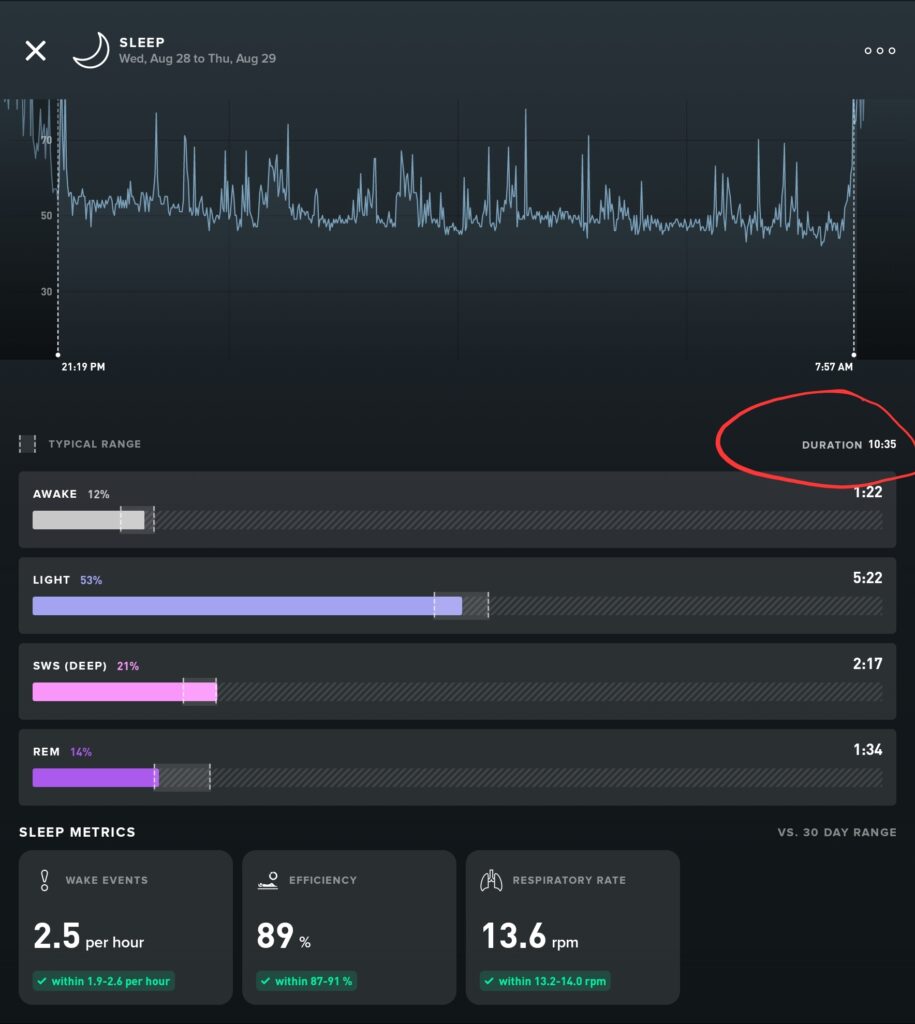
Conclusion: Advantages of Tracking with the Xiaomi Smart Ring and Oura Ring
Although the Xiaomi Smart Ring and Oura Ring do not match the precision of Whoop in terms of tracking different sleep phases, especially deep and REM sleep, they nevertheless offer a robust and detailed overview of sleep that far surpasses what typical smartwatches offer. Users seeking an in-depth analysis of their sleep will find these devices valuable. They are excellent tools for understanding and improving nighttime rest.
Workout Recording with Xiaomi Smart Ring and Oura Ring
In our workout recording tests, we utilized the Garmin heart rate belt as a benchmark for accuracy, given its proven technology that measures the heart’s electrical signals directly, making it the gold standard in heart rate tracking. Unlike the Garmin, both the Xiaomi Smart Ring and the Oura Ring employ Photoplethysmogram (PPG) technology, which indirectly interprets heart rate by measuring blood flow fluctuations. This distinction is crucial in understanding the technological differences and capabilities of each device.
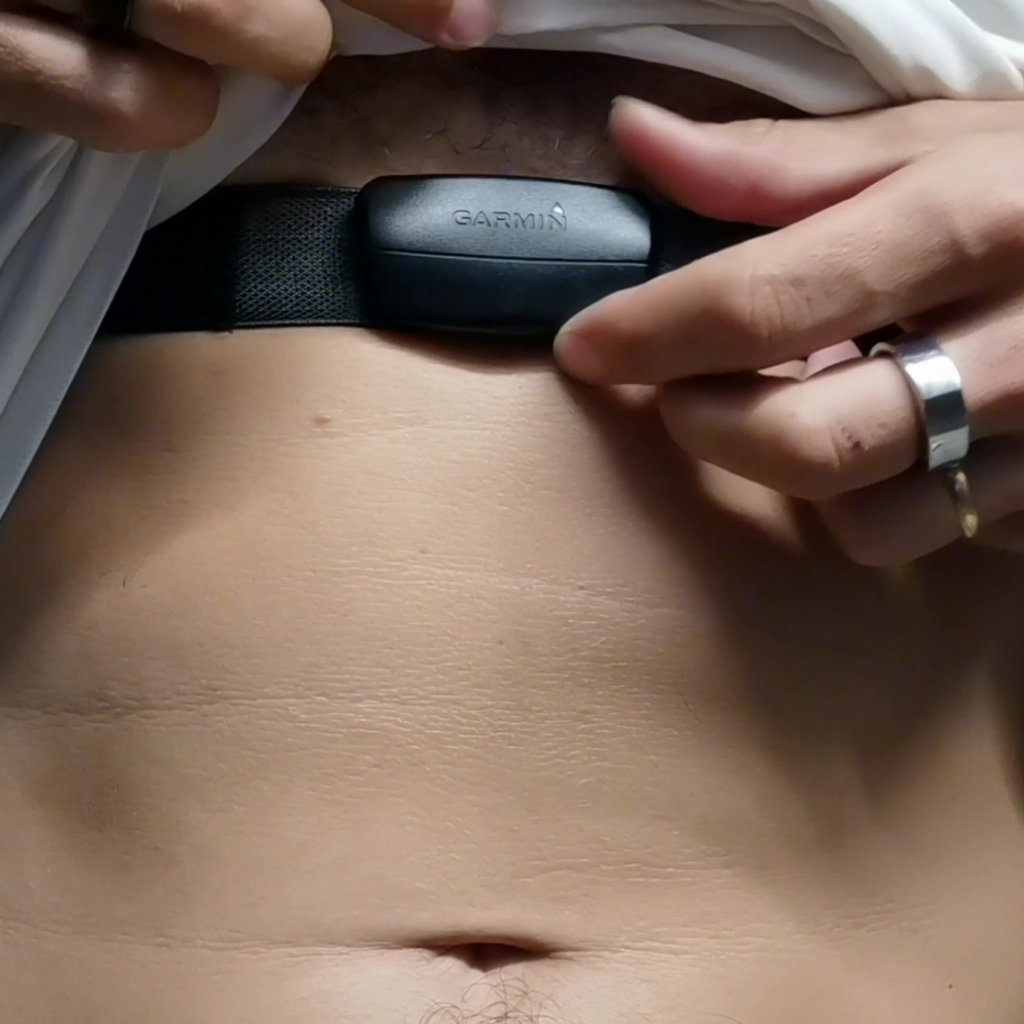
During workout sessions, the rings transition from a transient tracking mode to continuous recording mode. This shift is indicated by the activation of a green LED light, which signifies that the device has begun capturing continuous heart rate data that will not stop until the workout session ends. This feature is essential for the accuracy of the data recorded during our tests.


Once in continuous recording mode, both the Xiaomi and Oura rings delivered impressive, real-time heart rate readings that, despite minor variations, closely mirrored those of the Garmin. The continuous monitoring feature of these rings ensures they effectively capture the overall heart rate trends throughout the workout, demonstrating their utility as effective workout companions.
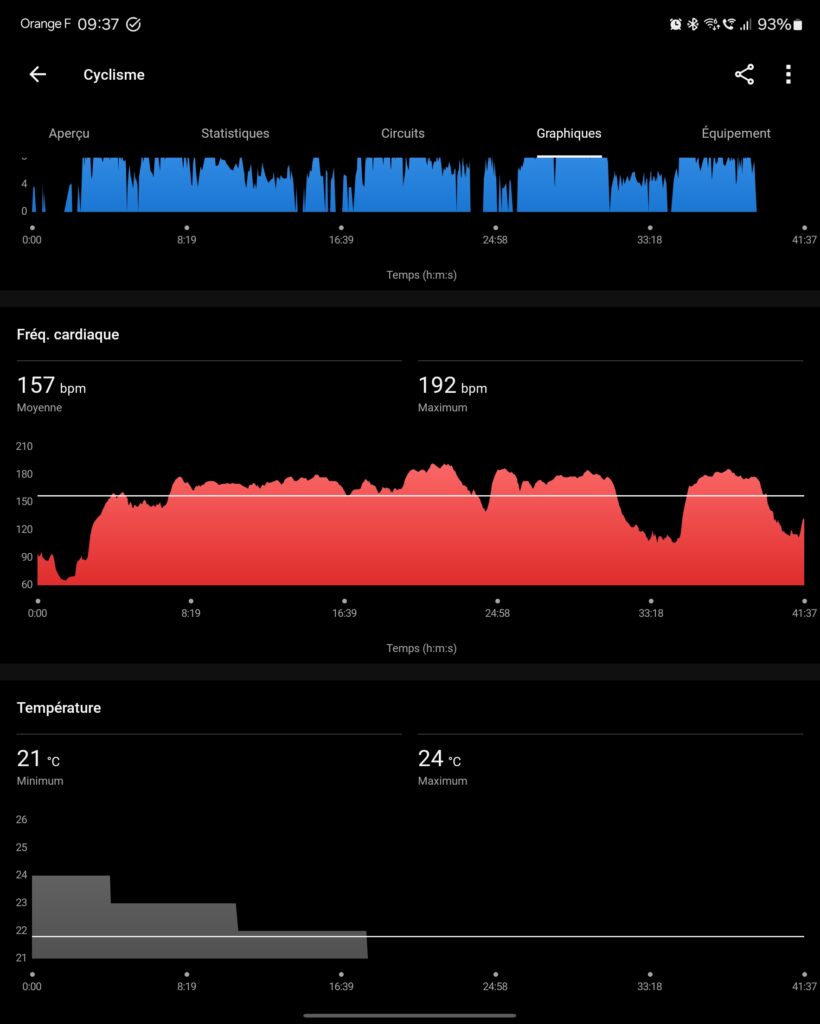
This in-depth look into the workout recording capabilities of the Xiaomi Smart Ring and Oura Ring highlights their advanced tracking technology. They provide precise and uninterrupted data during physical activities, adapting well to various workout demands. Although they employ a different technological approach than the Garmin, these smart rings offer a convenient and robust alternative. They are ideal for athletes and fitness enthusiasts who require accurate and efficient monitoring during their training sessions.
Design and Aesthetics of the Xiaomi Smart Ring and Oura Ring
A closer examination of the physical designs and available colors of the Xiaomi Smart Ring and Oura Ring reveals their refined aesthetics. Both rings blend seamlessly into daily wear, easily passing as ordinary jewelry. Their lightweight and comfortable designs ensure they can be worn all day without inconvenience.
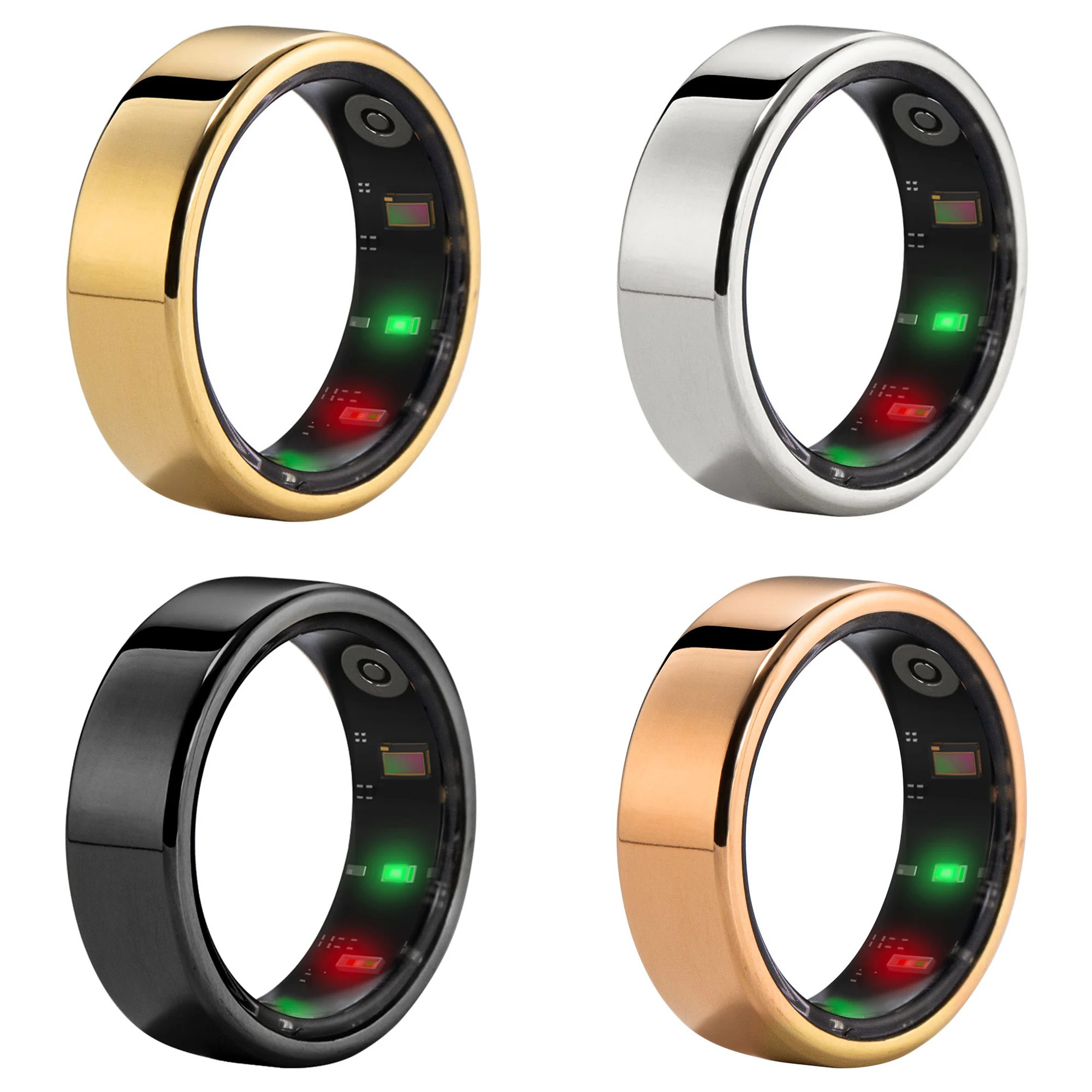
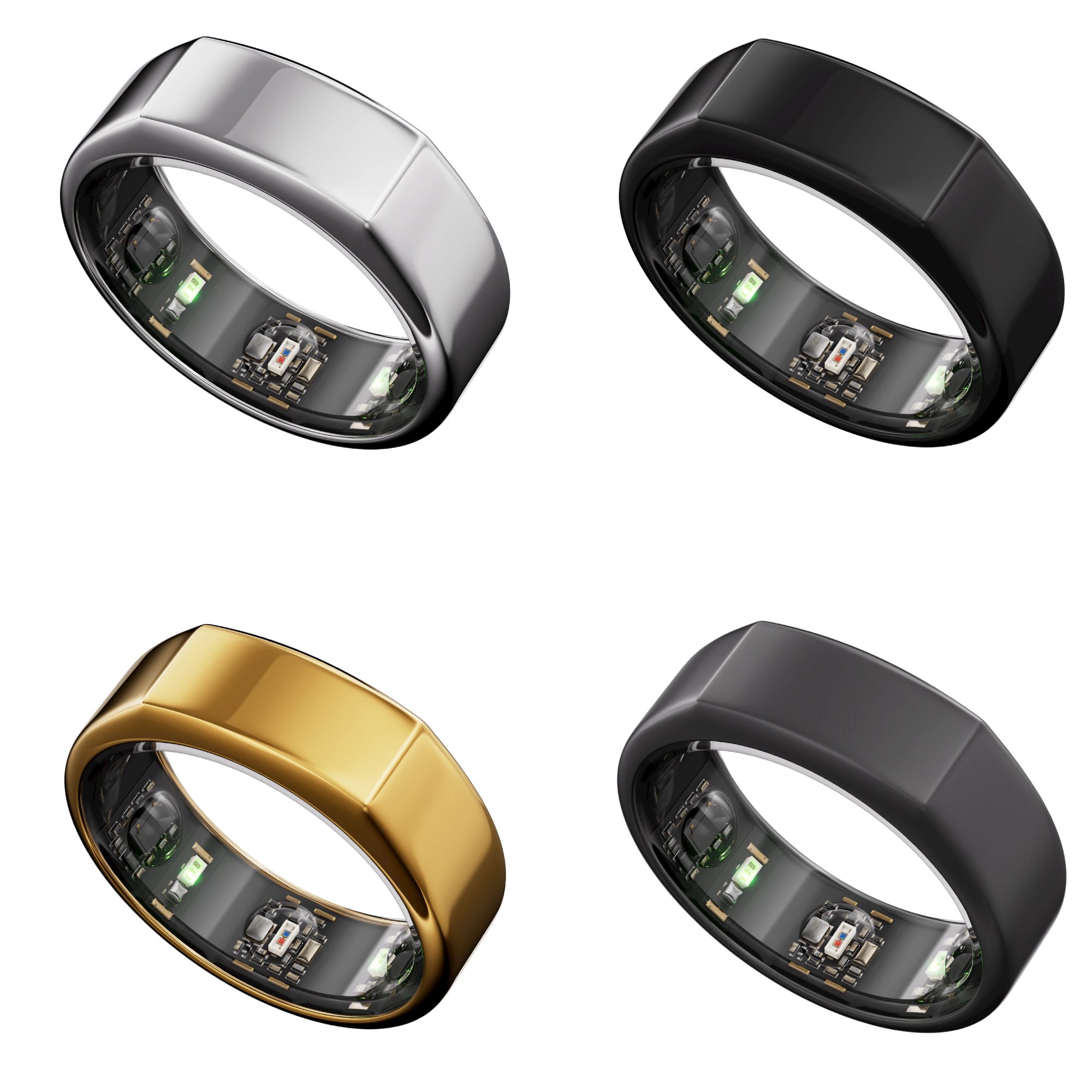
Distinct Styles
Oura opts for a more signet-ring style, which gives it a distinctive, bold appearance often associated with traditional statement jewelry. In contrast, Xiaomi features a classic rounded design that appeals to those seeking a more subtle and traditional look.
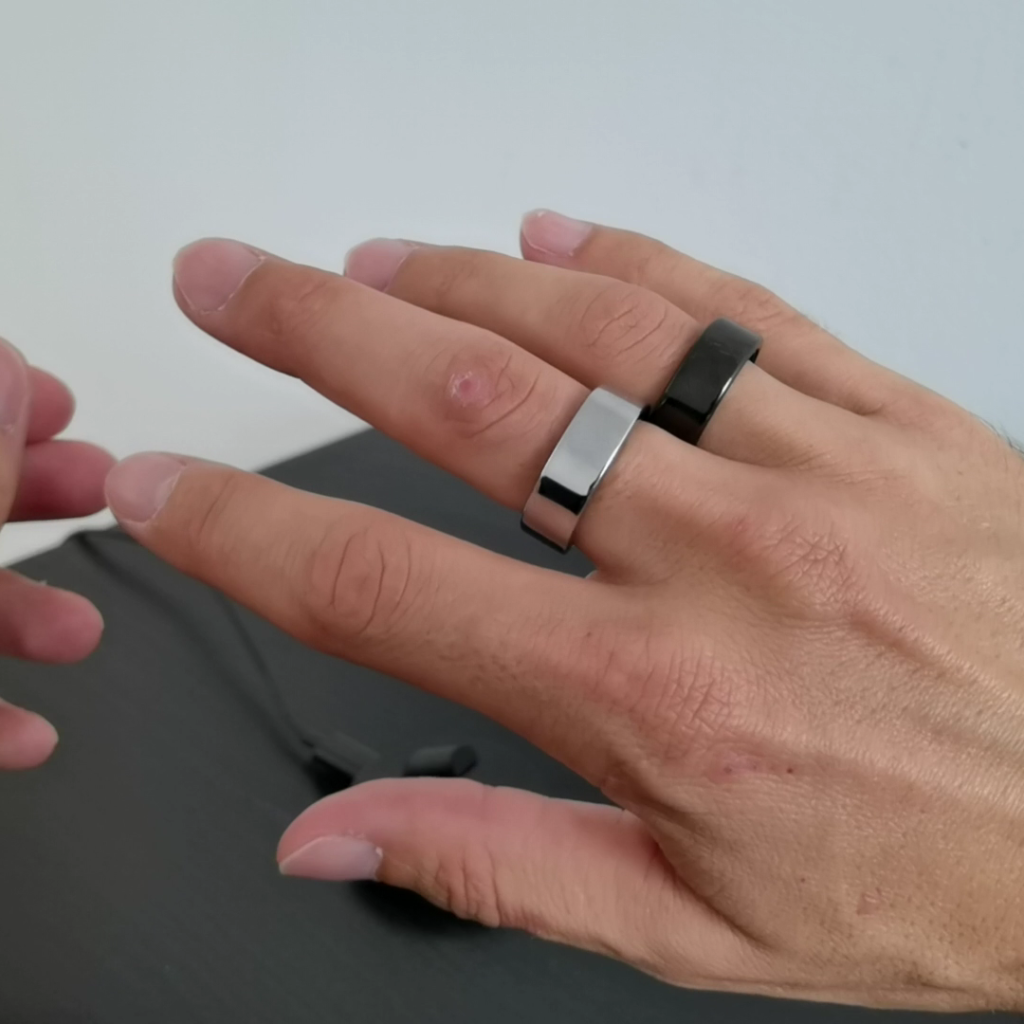
Sizing and Fit
Proper fit is essential for the functionality of smart rings, affecting both comfort and the accuracy of the sensors. Demonstrating the fit with ring sizers provided by each brand helps users make an informed choice. About me, Oura’s size 10 is recommended for a snug fit on the middle finger, which is ideal for stable heart rate monitoring. Conversely, Xiaomi’s size 9 is perfect for the ring finger, offering a balance between comfort and secure placement.
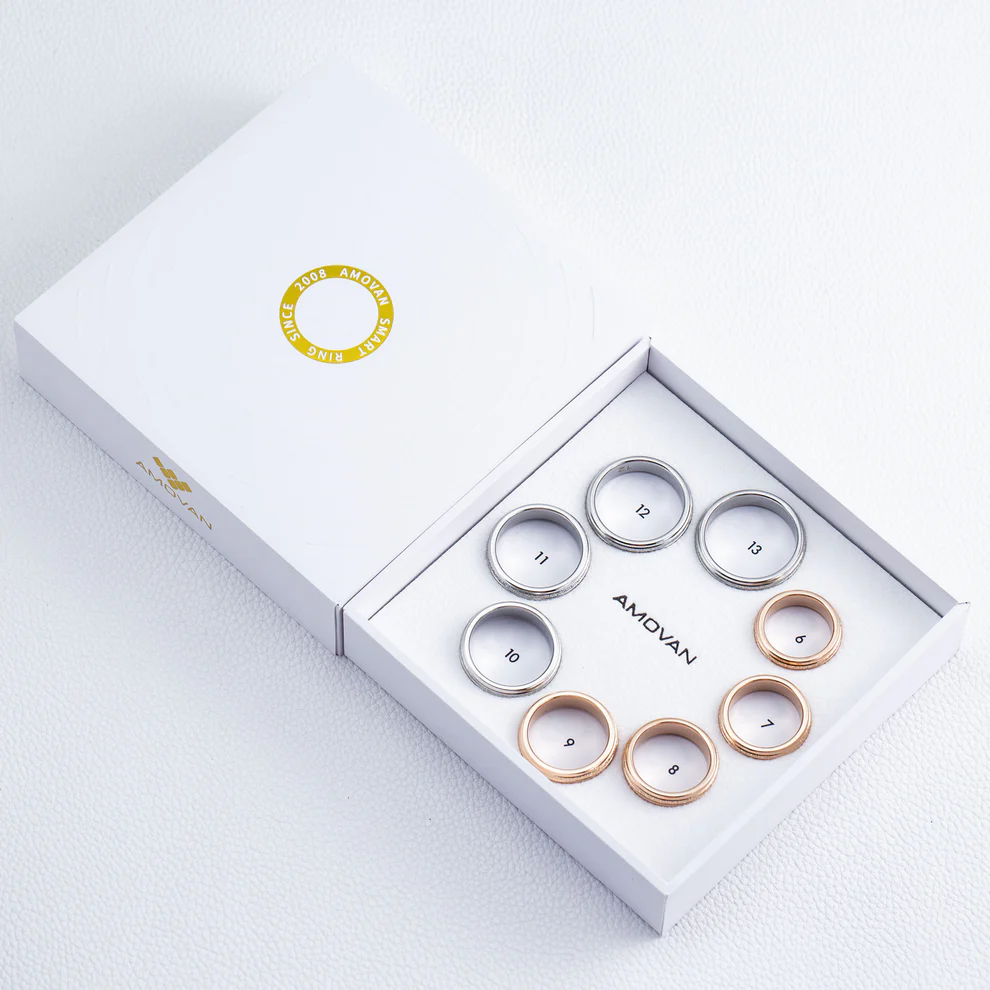
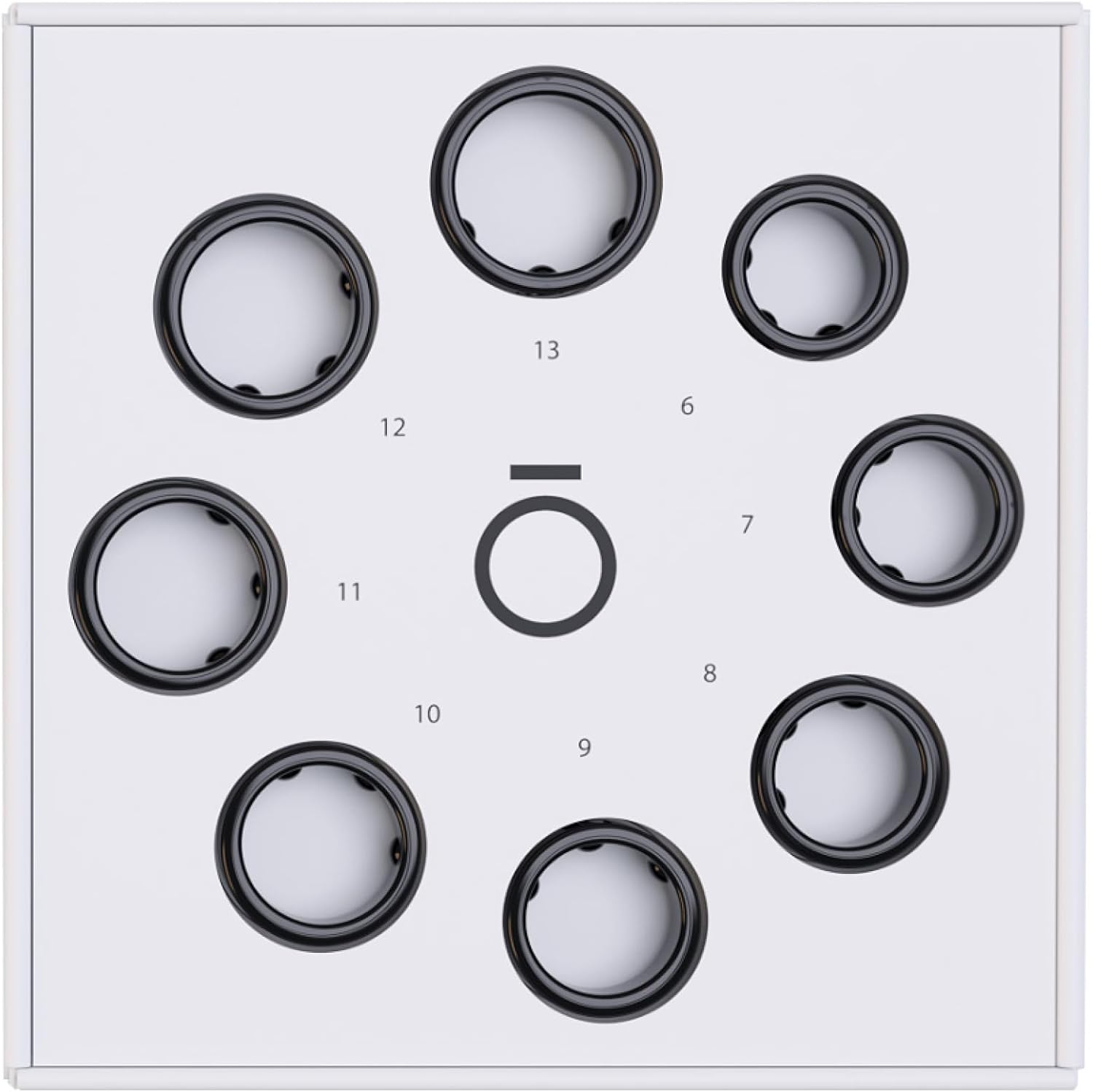
Battery Performance and Charging: Xiaomi Smart Ring vs Oura Ring
In our review, we delve into the battery efficiency and charging methods of the Xiaomi Smart Ring and Oura Ring, crucial factors for users who need reliable wearable technology without frequent recharges.
Charging Methods and Times
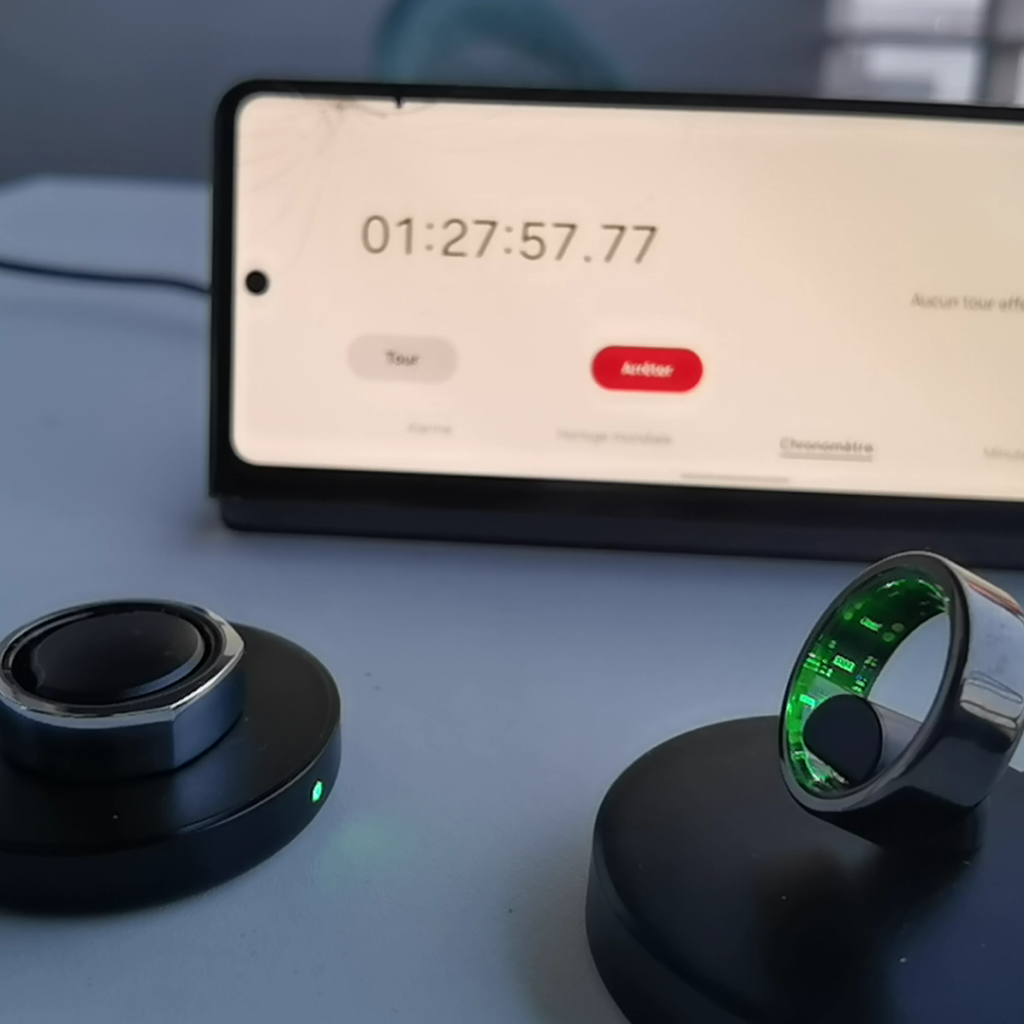
The Oura Ring utilizes an induction charging method which allows for a seamless, wireless power transfer. In contrast, the Xiaomi Smart Ring opts for a magnetic connector that attaches securely for consistent charging. Despite their different approaches, both rings exhibit ease of use and achieve a full charge in approximately 1 hour and 30 minutes. This rapid charging capability is ideal for users who value efficiency and quick turnaround times.
Battery Longevity
We monitored the battery life of each ring to assess how long they last on a full charge under typical usage conditions. The results show that the Xiaomi Smart Ring maintains its charge for up to 5 days, making it highly reliable for extended wear. On the other hand, the Oura Ring demonstrates a slightly superior battery life, lasting up to 7 days on a single charge. This extended battery life provides a significant advantage, particularly over typical smartwatches which often require more frequent charging.
The Oura Ring 3 stands out in the smart ring market with its advanced sleep tracking and impressive battery life, designed to blend seamlessly into daily life with its stylish signet-ring appearance.
- Superior battery life of up to 7 days
- Elegant design
- Requires a monthly subscription of $5.99
- Activity detection does not accurately register exercises
XIAOMI: 5 days
OURA: 7 days
App Power Consumption
An often overlooked aspect of wearable technology is the power consumption of its associated app. Oura’s app is relatively power-intensive, consuming about 6% of a smartphone’s battery life, which can be a consideration for users with already strained phone batteries. Conversely, Xiaomi’s app is notably more efficient, using only 0.3% of phone battery, adding to its appeal by minimizing its impact on the device’s overall battery consumption.
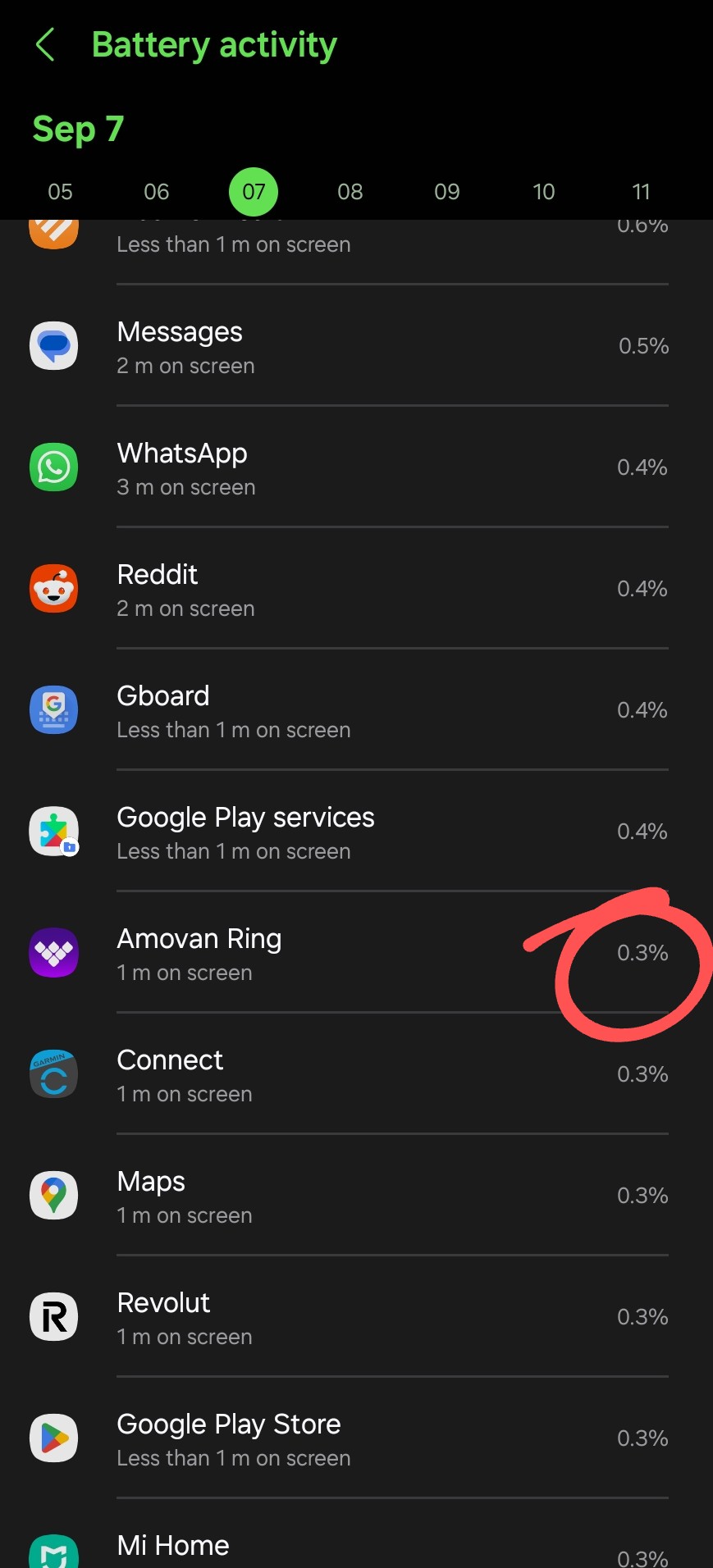
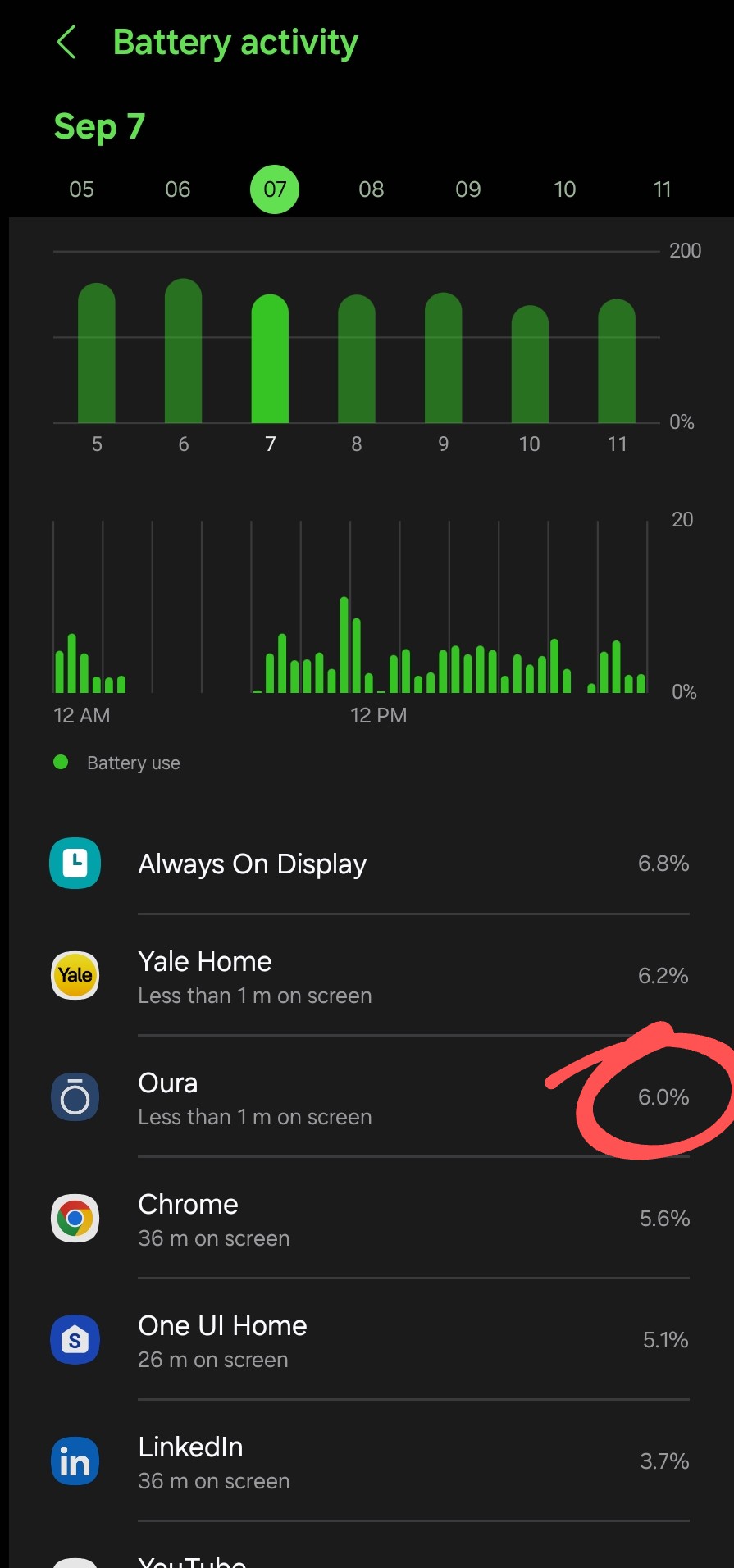
Comprehensive Review of 24/7 Activity Tracking Technologies
In the realm of wearable technology, continuous and accurate activity tracking is paramount. Here, we delve into how the Xiaomi Smart Ring, Oura Ring, and Whoop handle 24/7 activity tracking, each employing different methodologies with varying levels of data continuity and accuracy.
Intermittent vs. Continuous Tracking
The Xiaomi Smart Ring and Oura Ring adopt an intermittent recording approach, capturing data at various points throughout the day. This method results in gaps in data collection, which can lead to a less comprehensive view of the wearer’s daily activity and health patterns. In contrast, Whoop utilizes a continuous tracking methodology, ensuring no gaps in data collection. This approach allows for more accurate health insights and recommendations, as the data does not require interpretation to fill missing segments.

Analyzing the Graphical Data Representation
When examining the 24/7 activity tracking graphs:
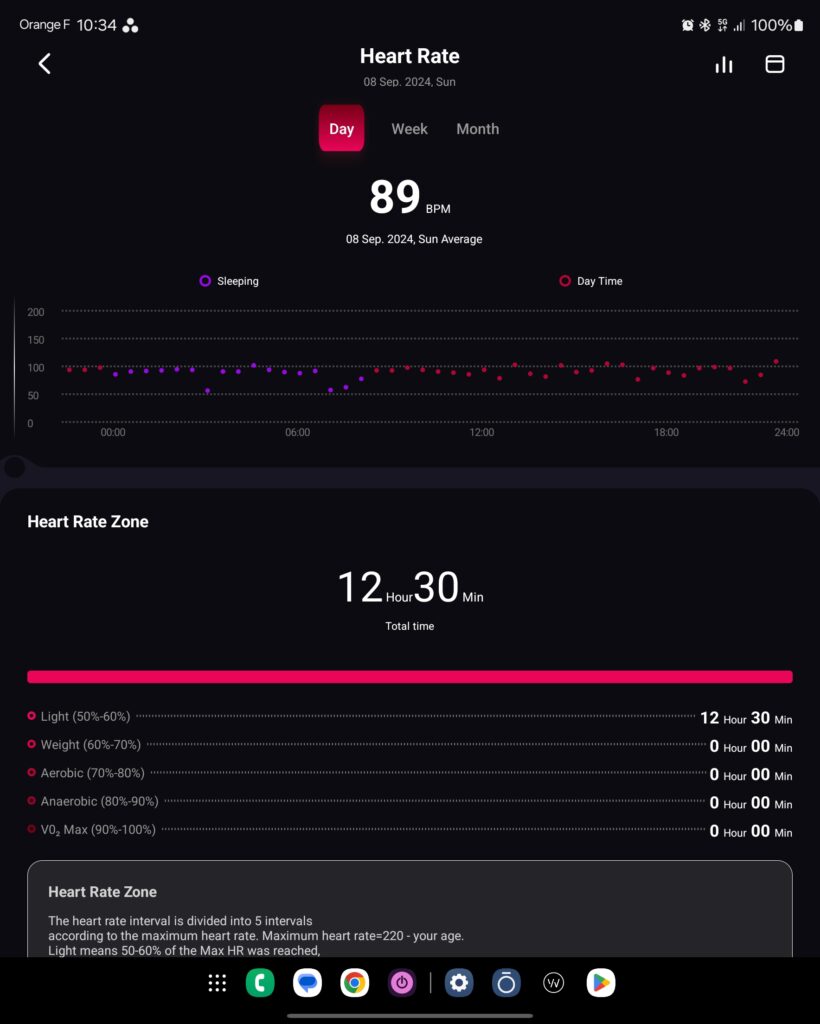
Xiaomi’s graph displays intermittent measurement points, visually indicating the gaps in data collection. This could potentially lead to inaccuracies in interpreting overall health and activity levels.
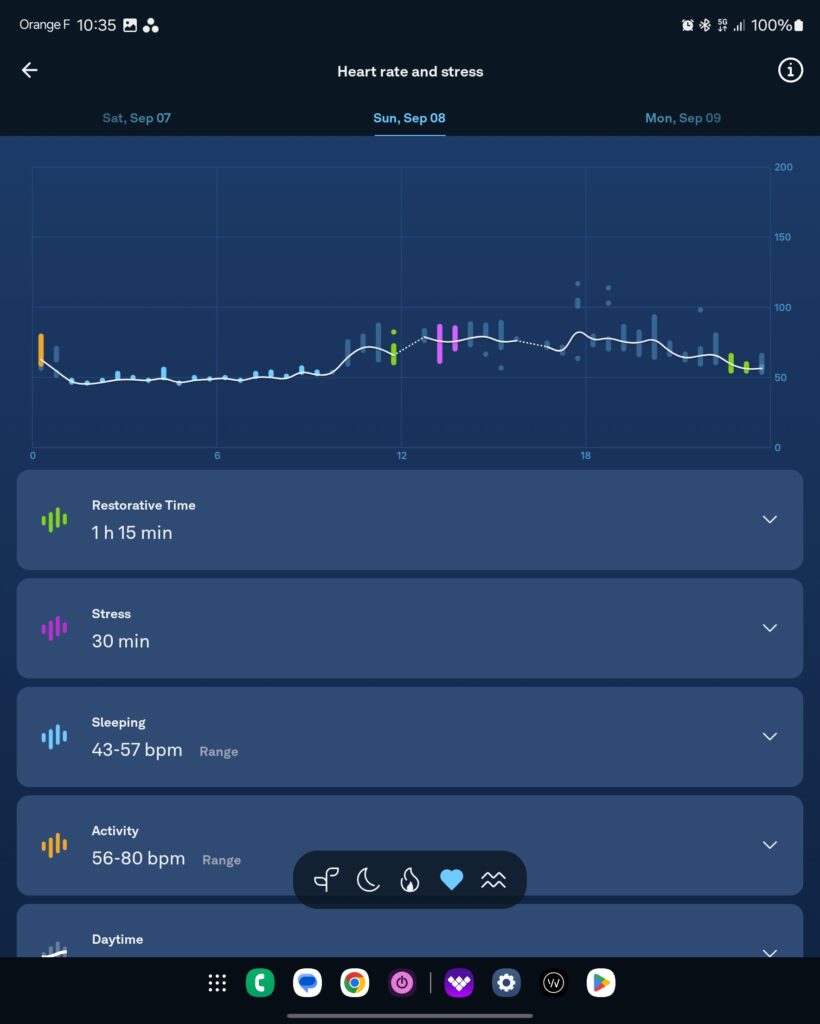
Oura’s graph uses bars to depict the highest and lowest measurements during the recorded periods, giving the appearance of detailed tracking. However, like Xiaomi, it still lacks continuous data, which can miss subtle but important health indicators.
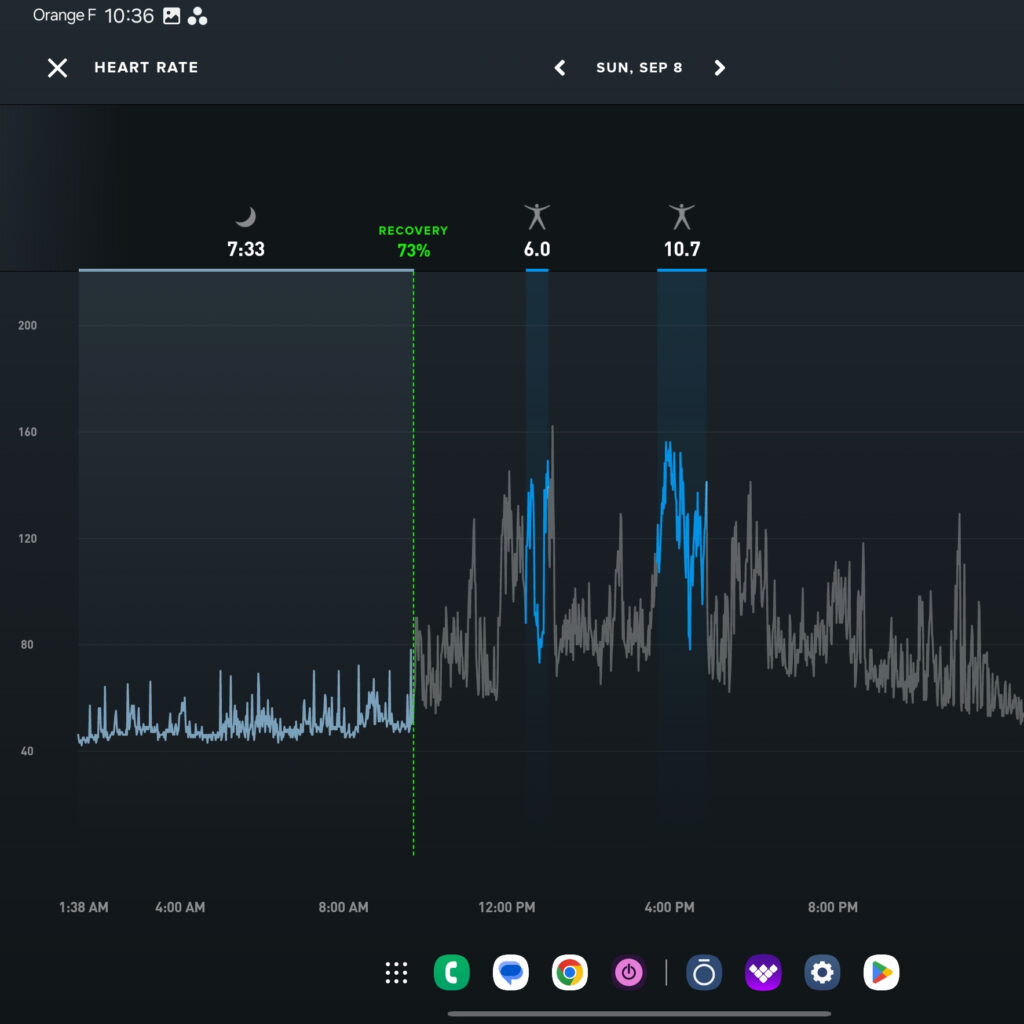
In stark contrast, Whoop’s tracking is hailed as the gold standard in health monitoring. It provides precise, continuous monitoring similar to the detailed session tracking used in professional sports analytics. Available 24/7, it offers an unbroken timeline of activity, heart rate measurements, and time spent in various heart rate zones.
Activity Detection Capabilities comparison between Xiaomi Smart Ring, Oura, and Whoop
Additionally, the Xiaomi lacks an activity detection feature, which might be a drawback for users needing automated activity recognition. Oura includes this feature but often fails to accurately register specific exercises. It usually only notes an increase in step counts during activities such as running. In contrast, Whoop consistently excels. It accurately detects the correct activity at the right time and provides detailed insights into heart rate fluctuations and exertion levels.


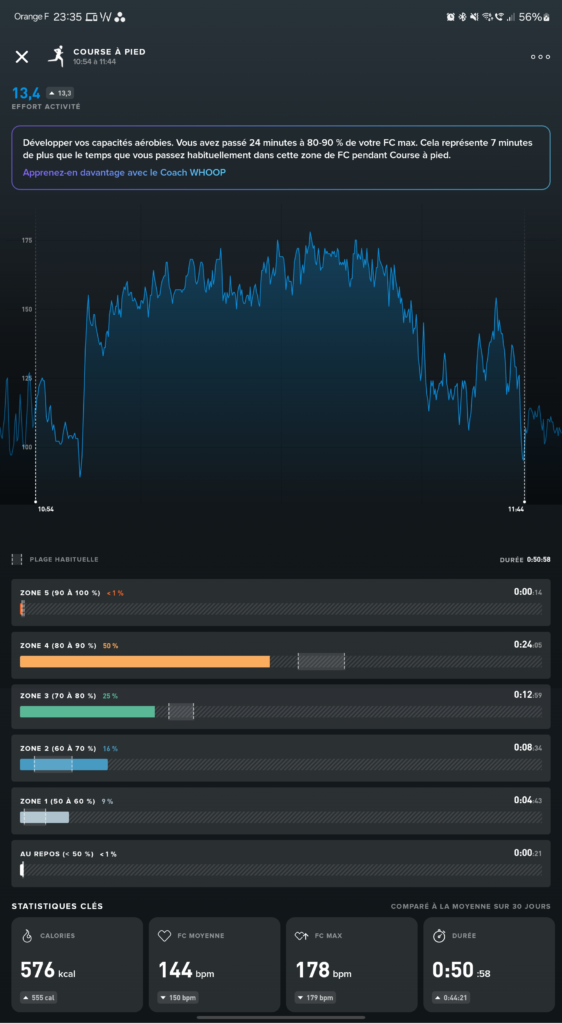
Assessing the Waterproof Capabilities of Xiaomi Smart Rings and Oura
During the test, both rings were submerged to verify their ability to withstand water exposure. This step is essential for users who engage in activities involving water or simply seek assurance against everyday water encounters, like handwashing or rain.
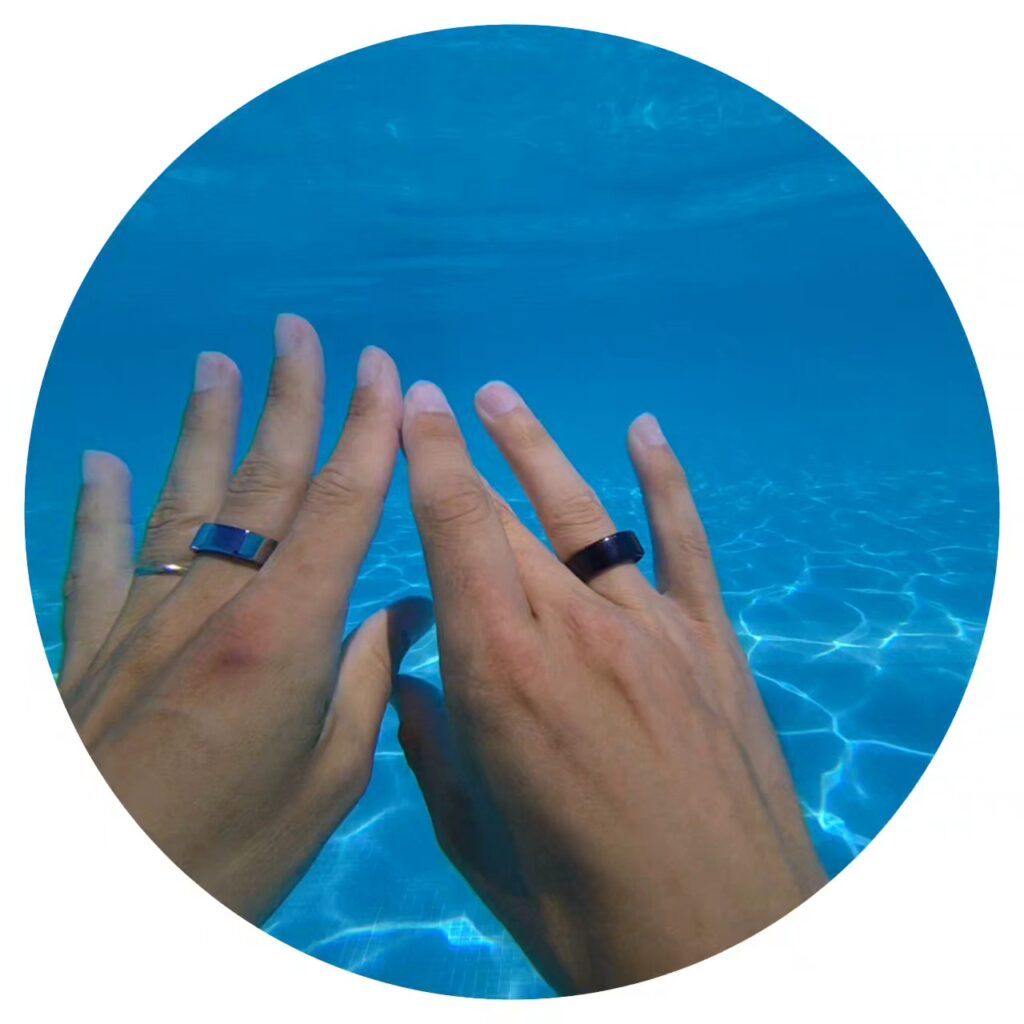
Limitations in Functionality
Despite their resilience to water, it’s important to note that neither the Xiaomi Smart Ring nor the Oura Ring offers swim tracking. This is a notable limitation compared to some smartwatches, which not only resist water but also track swimming as a specific workout. This missing feature could be a deciding factor for users who are avid swimmers or those who want detailed metrics related to water sports.
App Experience: Free vs. Subscription
When it comes to the user interface and features of smart ring apps, Xiaomi and Oura take distinctly different approaches to accessibility and cost.
Sedentary Alerts and Encouragement to Move
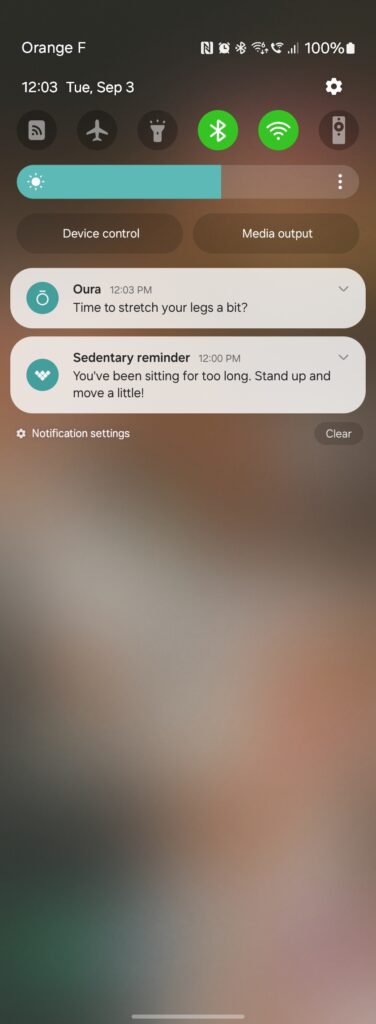
A time-lapse of my day at the desk reveals the reality of prolonged inactivity common in many professional environments. Both the Xiaomi and Oura rings are programmed to recognize this inactivity. After about an hour of no significant physical movement, each ring sends a notification. This timely reminder acts as a nudge to encourage me to stand up and engage in brief physical activity, which is vital for maintaining cardiovascular health and overall physical well-being.
Xiaomi Smart Ring’s Free App Experience with Exclusive Heart Rate Alerts
Xiaomi distinguishes itself by providing a comprehensive suite of health tracking features entirely free of charge. This includes:
- SpO2 Monitoring: Allows users to monitor their blood oxygen levels, critical for assessing overall health, especially in fitness and high-altitude situations.
- HRV Analysis: Offers insights into heart rate variability, reflecting on cardiovascular health and stress levels.
- Stress Management Tools: Tracking functionalities to manage stress.
- Exclusive Real-Time Heart Rate Alerts: An outstanding feature of Xiaomi’s app is the real-time heart rate alerts. This tool alerts users to abnormal heart rates, enabling prompt action to mitigate potential health issues. This exclusive feature ensures users are always aware of critical changes in their health metrics, adding an extra layer of security and preventative care.

These features, accessible without any subscription, make Xiaomi’s app highly attractive for users looking for extensive health tracking capabilities without a financial outlay.
The Xiaomi Nova Ring, featured on Xiaomi's Crowdfunding platform, excels in providing a detailed sleep and activity tracking experience with robust health monitoring capabilities.
- Excellent sleep tracking comparable to Whoop
- Accurate heart rate measurements without a subscription
- No continuous tracking
- Lacks an activity detection feature
Oura’s Premium Subscription Model with Exclusive Google Health Integration
On the other hand, Oura adopts a premium model, charging $5.99 per month for access to its comprehensive health monitoring tools. The subscription includes:
- Resilience Scoring: Utilizes HRV data to provide users with a resilience score, painting a clear picture of their recovery and stress levels.
- Detailed Rest Metrics: Delivers an in-depth analysis of sleep patterns, aiding users in optimizing their rest for better health outcomes.
- Exclusive Google Health Integration: Oura sets itself apart with its ability to integrate health data with Google Health. This feature lets users consolidate their health information across platforms. It enhances the utility of the data collected and supports broader health management strategies.
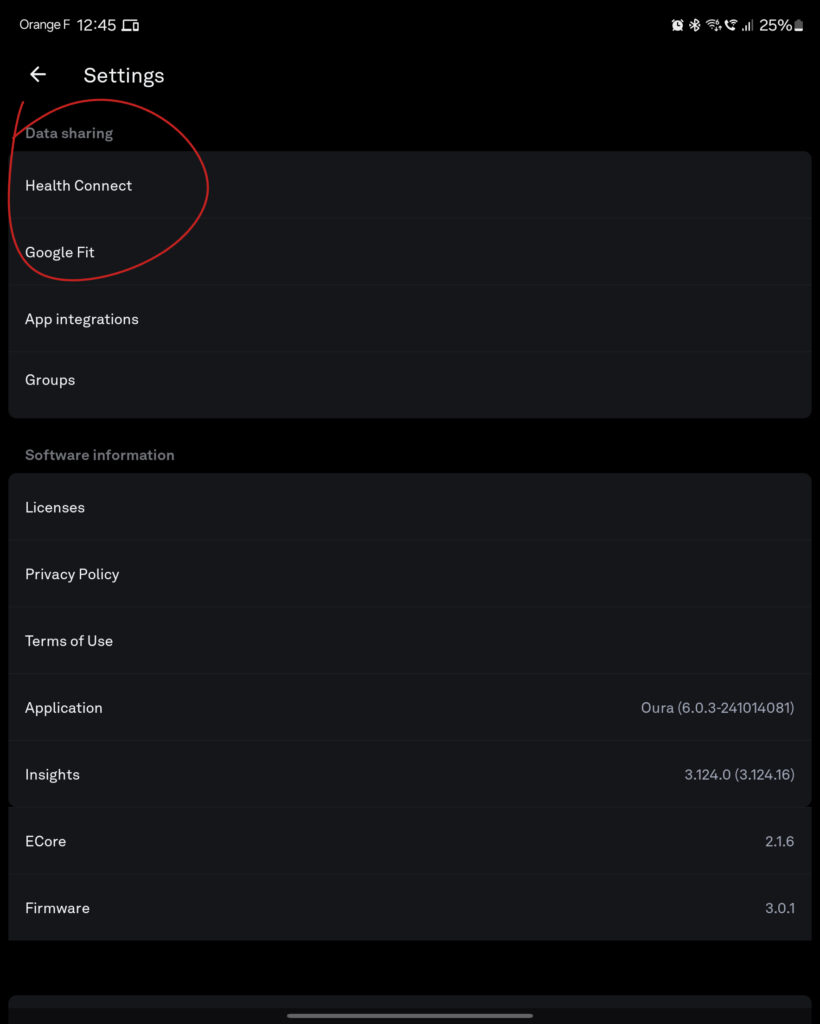
This subscription-based approach caters to those who prioritize integrated insights into their health.
Final Thoughts: Choosing Between the Xiaomi Smart Ring and Oura Ring 3
After testing the Xiaomi Smart Ring and the Oura Ring, it’s evident that both devices perform solidly in terms of sleep tracking and physical activity monitoring, although their activity detection is somewhat lacking. Both rings utilize similar technologies, and although Oura offers a slightly longer battery life, its mobile app is quite power-hungry and requires a paid subscription to access features that Xiaomi offers for free.
Oura distinguishes itself with an array of health features, but many of these seem more gimmicky or lack robust scientific backing. The high price of the Oura and its app might be attributed to the brand’s marketing. In contrast, Xiaomi focuses on the essentials, offering a more cost-effective option for key functionalities. However, it’s important to note that neither ring matches the Whoop, the gold standard in health and fitness tracking.
Note: This review complements our detailed video comparison available on YouTube. Watch our hands-on testing of the Xiaomi Smart Ring and Oura Ring 3 here:
This will give you a visual understanding of the features discussed and help you see the rings in action.
Explore More Technology Reviews
While exploring the latest in wearable tech, don’t miss our in-depth reviews of the top projectors on the market.


